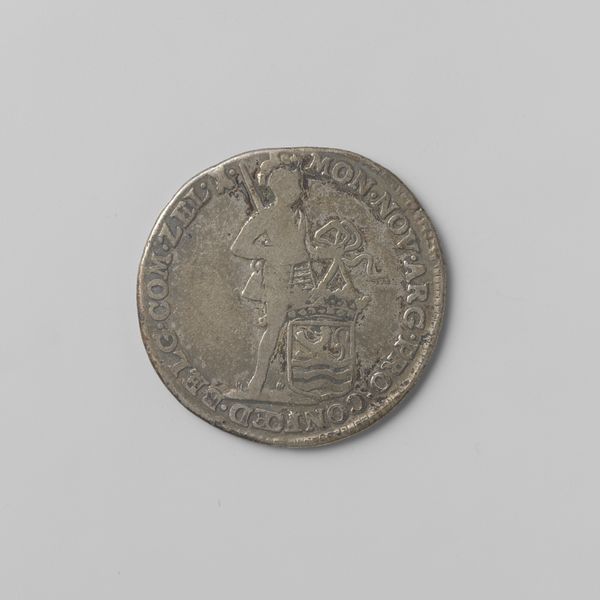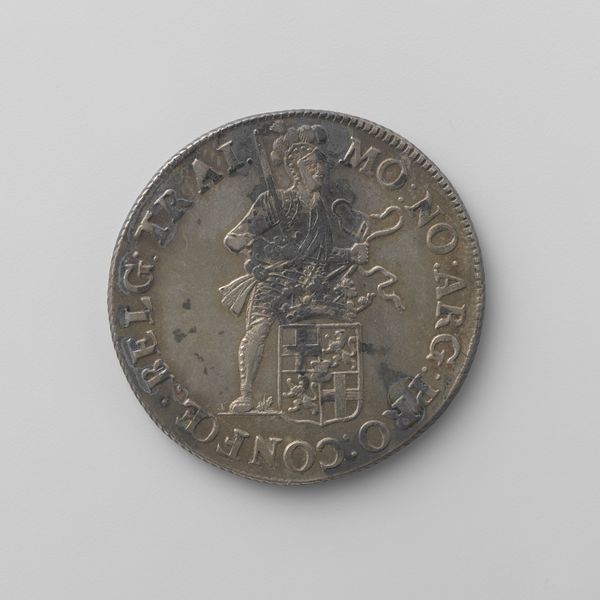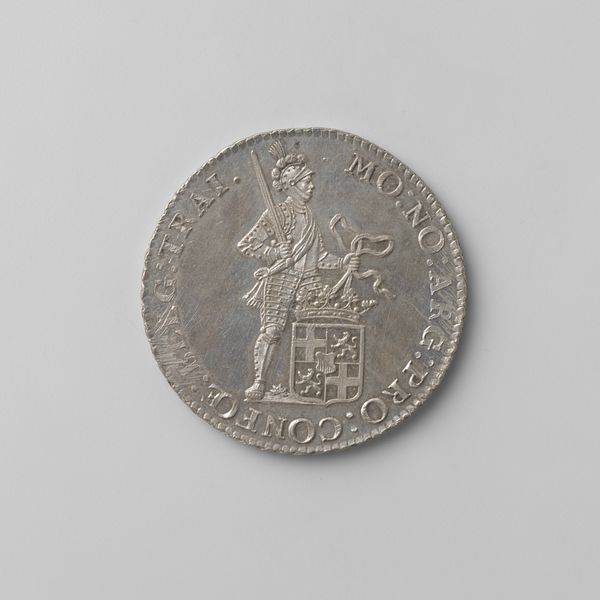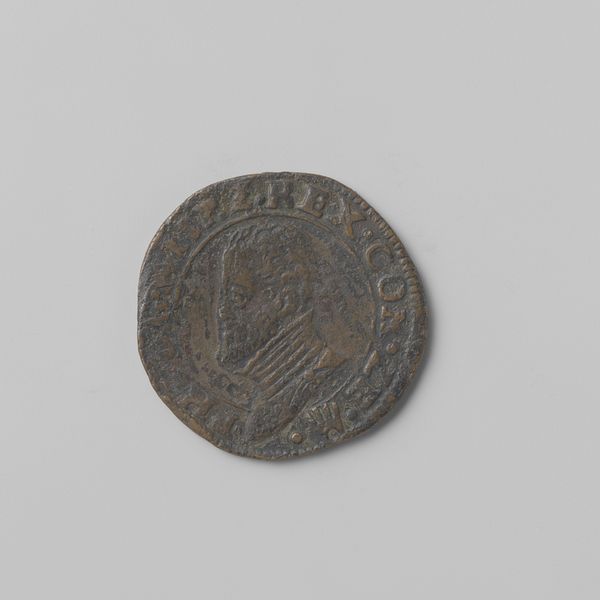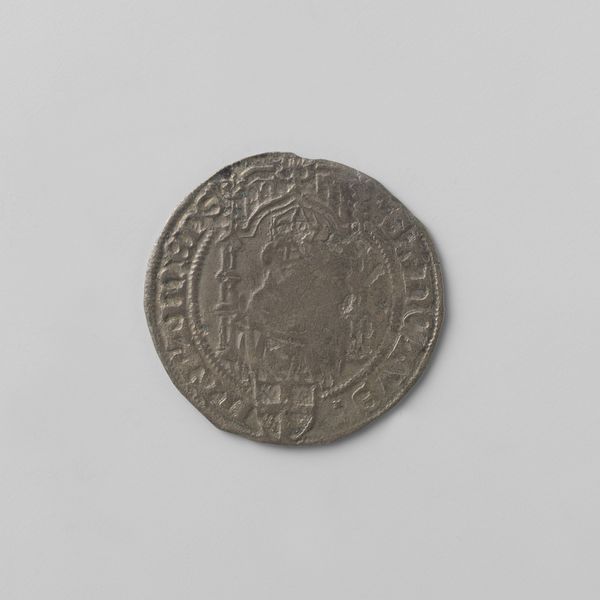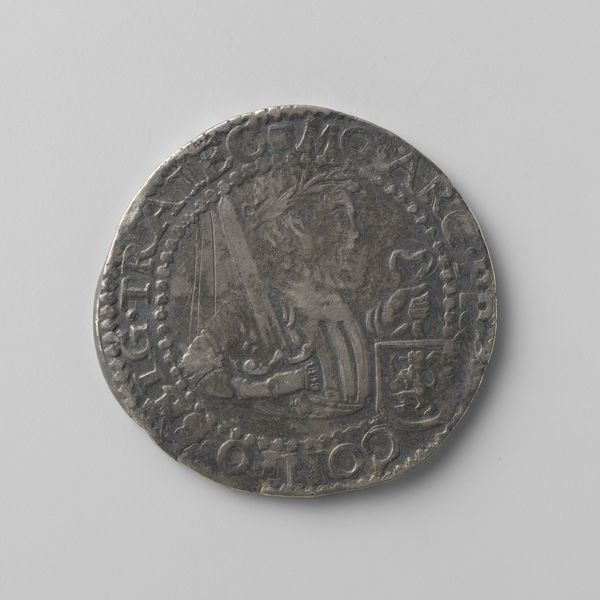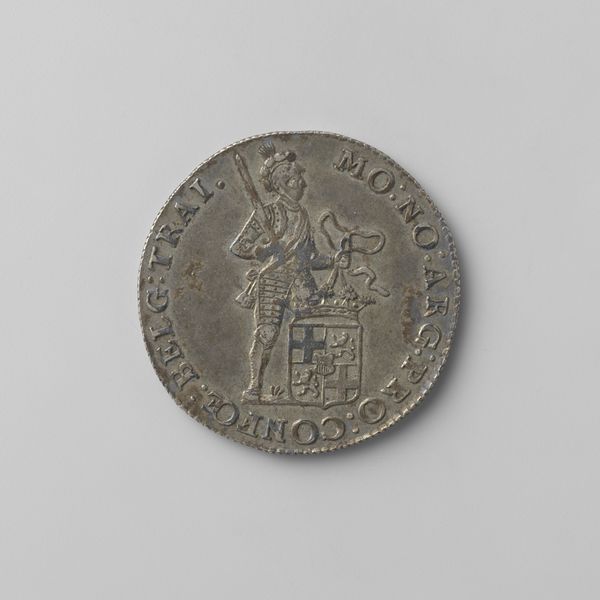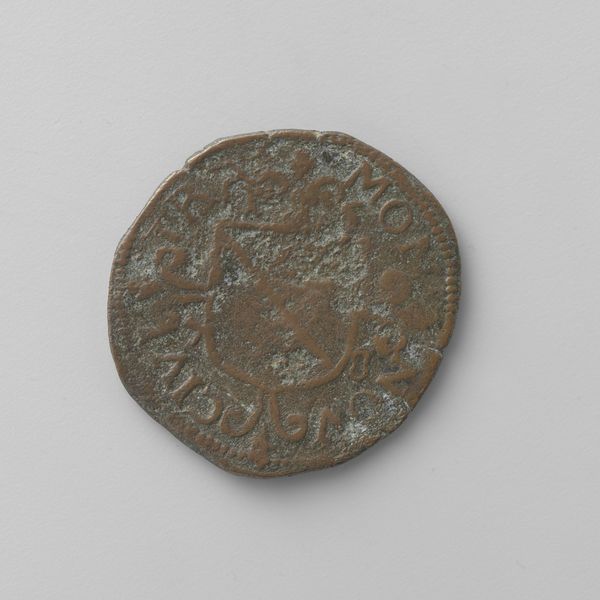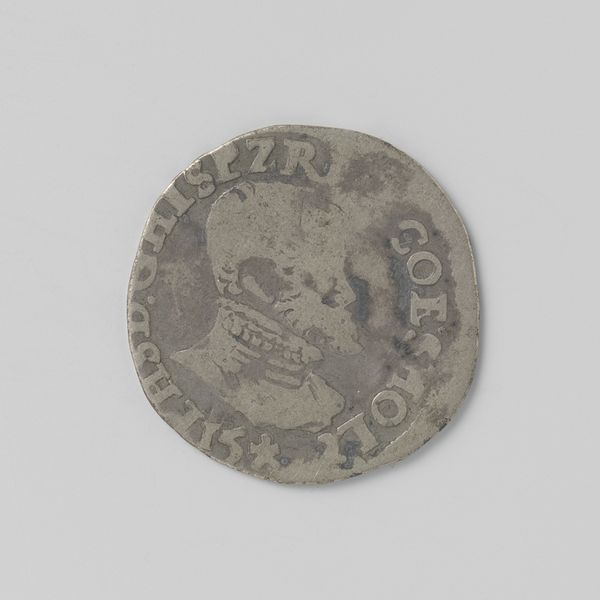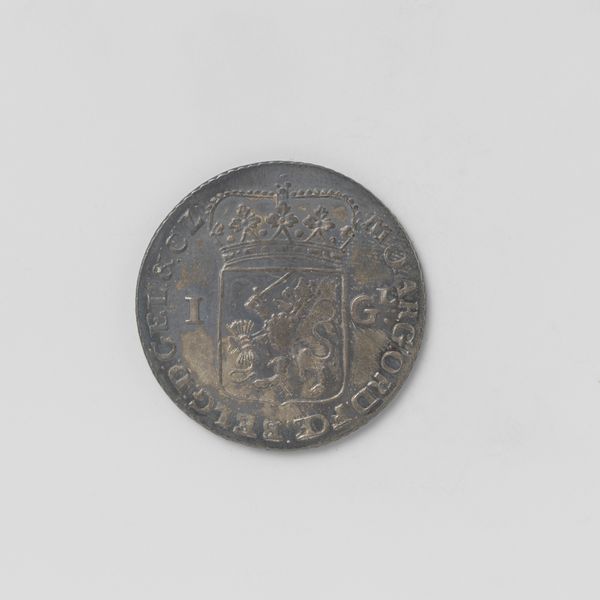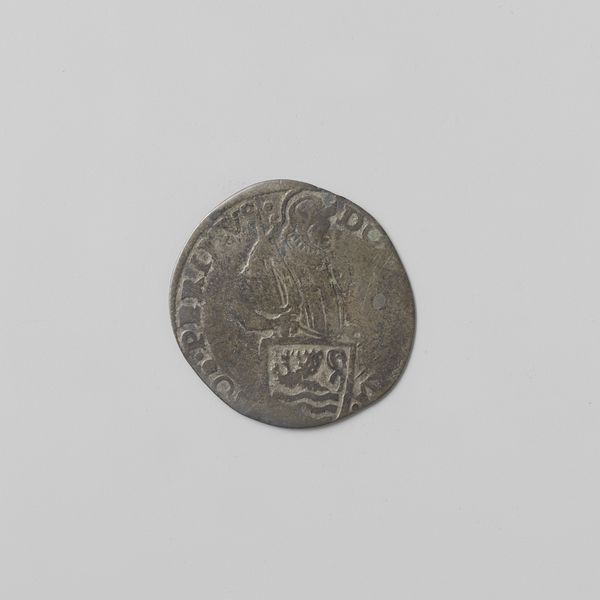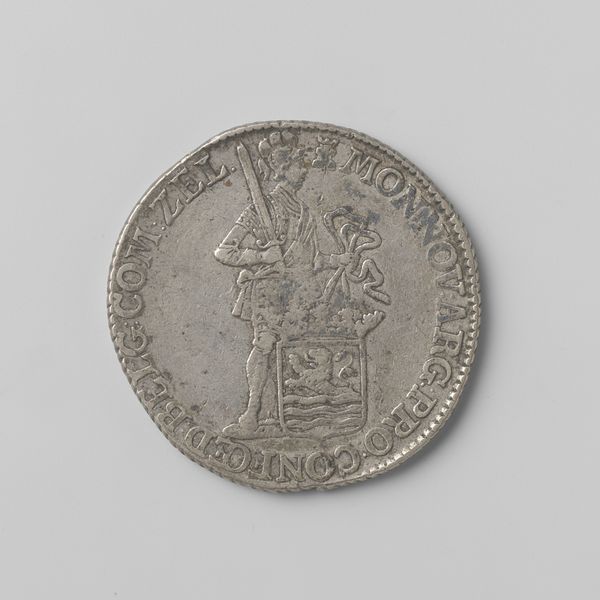
silver, print, metal
#
portrait
#
silver
# print
#
metal
#
11_renaissance
#
embossed
#
italian-renaissance
Dimensions: diameter 3.0 cm, weight 6.21 gr
Copyright: Rijks Museum: Open Domain
This is the Utrechtse vijfde philipsdaalder, made in 1571 under Philips II, King of Spain, from silver. As a coin, it was produced through a process of striking, pressing the design into the metal with a die. The coin's material, silver, lends it value, durability, and a distinct, metallic sheen. The detailed portrait of King Philips II, along with inscriptions, demonstrates the skill of the die cutter. But it also speaks to the power of the monarchy, which has the right to produce money. This isn't just a useful object. It’s also a propaganda tool. Coins like this philipsdaalder facilitated trade and economic exchange, becoming essential elements in the growth of capitalism. Their production involved the labor of miners extracting silver, skilled artisans crafting dies, and mint workers striking the coins, all contributing to a complex economic system. Consider the ways in which materials, making, and context intertwine to give meaning to even the smallest artwork. It encourages us to look beyond the mere function of the artwork and appreciate its wider cultural significance.
Comments
No comments
Be the first to comment and join the conversation on the ultimate creative platform.
